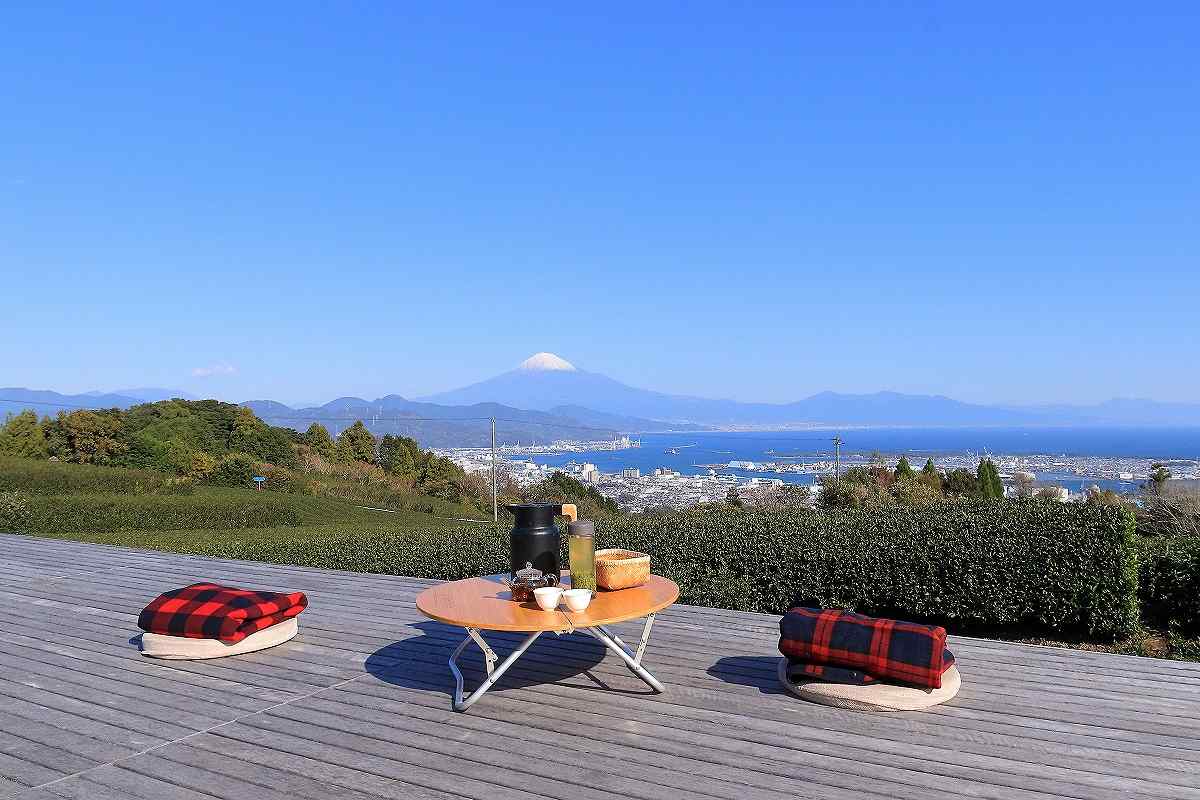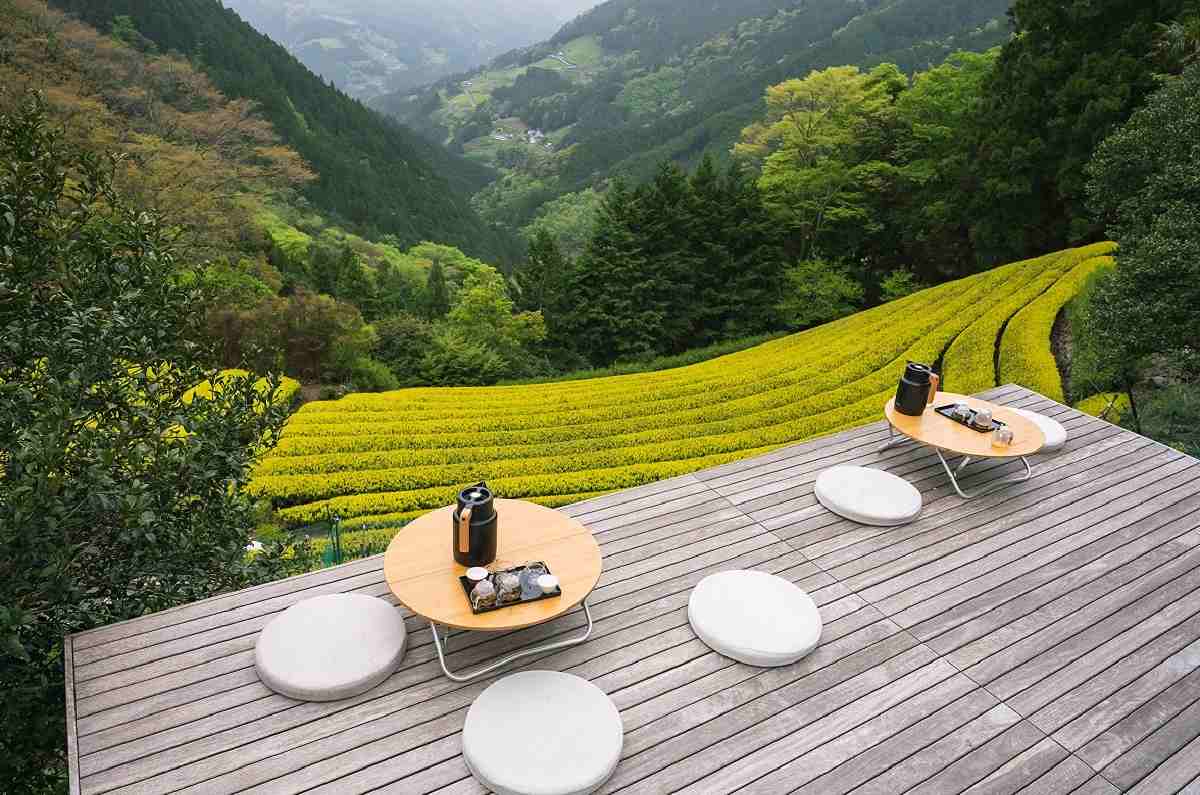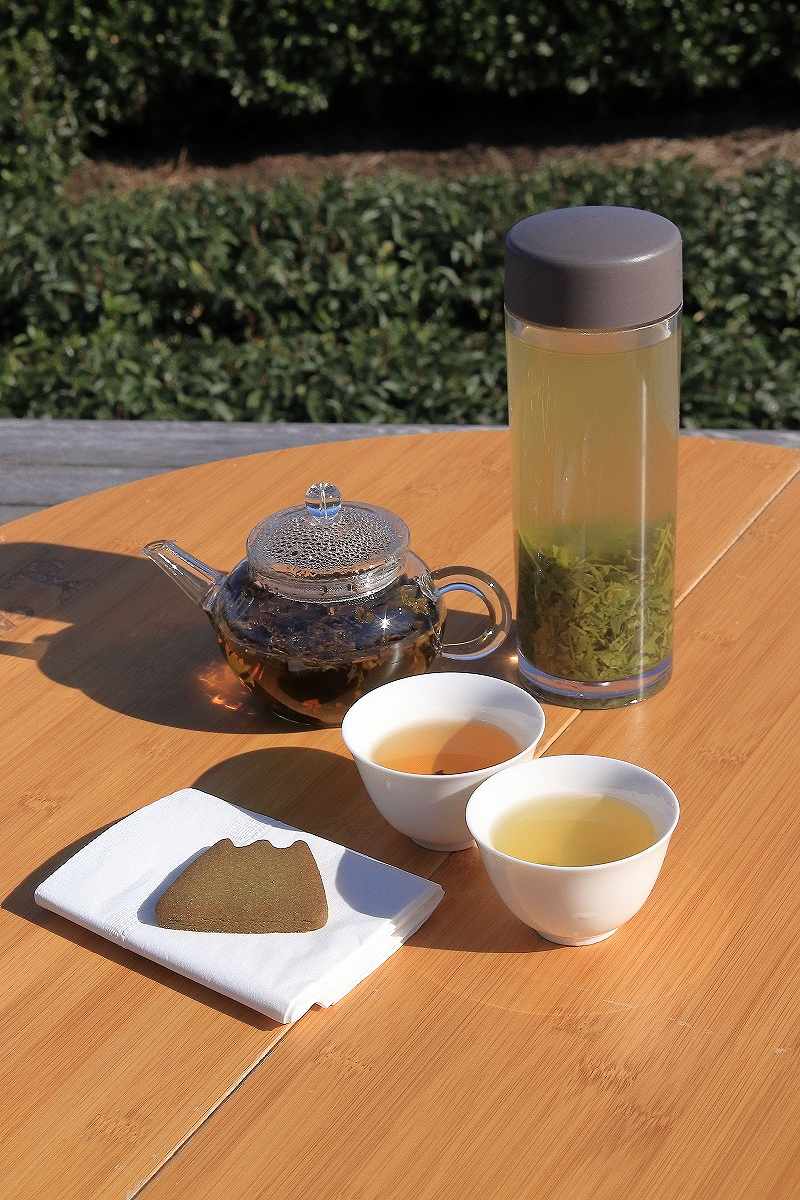SHIZUOKA, JAPAN (ANN/THE YOMIURI SHIMBUN) – Nestled in the heart of Shizuoka Prefecture, Japan’s veritable green tea haven, a serene revolution is unfurling – welcoming visitors to experience the enchantment of “chanoma” tea terraces.
These elevated wooden decks, strategically placed amidst the lush green tapestry of tea fields, offer more than just a sip of Japan’s renowned green tea; they provide an immersive journey into the soul-stirring landscapes of Shimizu Ward.

In 2019, the inception of the “Chanoma Project” breathed life into this ambitious endeavour, a heartfelt mission to celebrate and elevate the eminence of Shizuoka’s verdant tea legacy.
“While the Panorama Tea Terrace is the fifth of this kind, the location had been a candidate site when the project was still at the planning stage.
“The opening of this tea terrace was long-awaited,” said Kyoka Suzuki of Aobeat, the company operating the project.
Her comment raised my expectations for the tea terrace.
Embarking on a 40-minute journey aboard a free shuttle bus from the south exit of Shizuoka Station, the anticipation builds with every passing mile.
As I step into the Nippondaira Hotel, a sanctuary perched on the first floor, I am greeted by the warm embrace of the terrace lounge. The reception unveils a tea set, a chabudai low table, a cushion, and a blanket – a collection of elements that promises not just physical comfort but a cocoon of emotional solace.
The careful presentation of these items feels like an invitation into a realm where time slows, and every detail holds significance. It’s not merely a tea set; it’s a ritual of serenity. The chabudai low table extends an offer of shared moments, and the cushion and blanket, a promise of relaxation and repose.

Together, they compose a symphony of hospitality, transcending the ordinary into an experience that lingers in the heart long after the journey ends.
It is about a 10 minute-walk to the tea terrace. Customers are supposed to carry all the items themselves. For that reason, the tea terrace only accepts customers in a party of two or more in principle. I was in trouble as I came by myself.
Since there were fragile items such as a teacup, I was wondering how I should carry them. Then, one of the hotel staff offered to help me. There is nothing more delightful than receiving kindness while travelling.
“The tea set includes the hotel’s original Mt Fuji cookies, and many customers buy other sweets at the hotel,” the hotel staff said.
As I chatted while walking with the hotel staff, I felt as if I were carrying camping items, which made me feel excited.
We arrived at the tea terrace shortly thereafter. The wooden deck is about 1.75 metres high, and customers should take off their shoes before going up the steps. My first impression was that the deck was much larger than expected. The deck is around 40 square metres so it can be used for events such as wedding photography.
As I looked in front of me, I saw a snow-capped Mt Fuji with its beautiful ridges stretching to its right and left. I could also see the Shimizu port, Miho no Matsubara pine grove and Suruga Bay as well as green tea fields out in the foreground. I was wowed by the breathtaking view, typical of Shizuoka.

I opened the folded chabudai table and prepared tea utensils on it. I had cold sencha green tea and hot hojicha tea that day. First, I drank the sencha green tea, which sunk deep into my dry throat, followed by a slightly sweet aftertaste. High-quality sencha tea is called “kanro (sweet dewdrops),” which I became convinced is the perfect name for it.
Next, I drank the hojicha tea. I put tea leaves in a kyusu teapot and poured them in a pot of boiling water. I was told that the trick is to wait for about 30 seconds before drinking. I enjoyed the aroma unique to hojicha tea while taking in the spectacular view. – Akira Uchida







